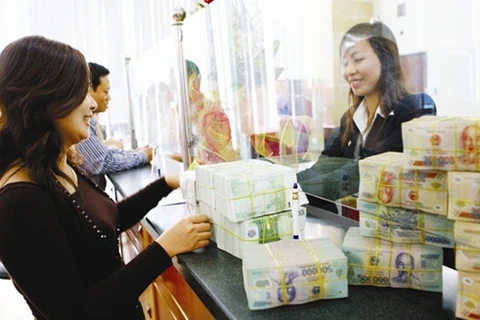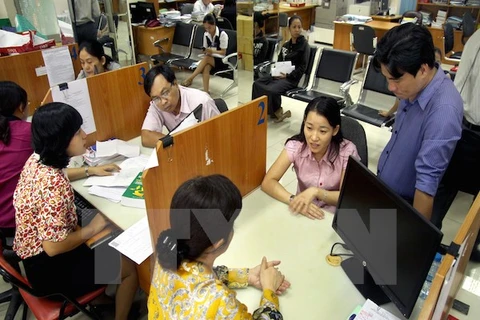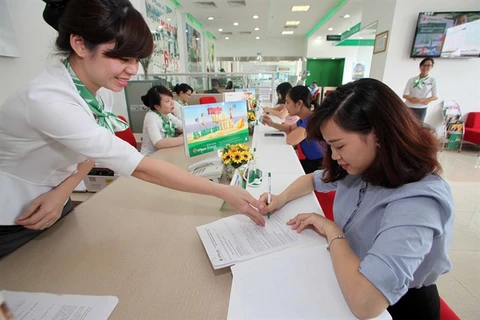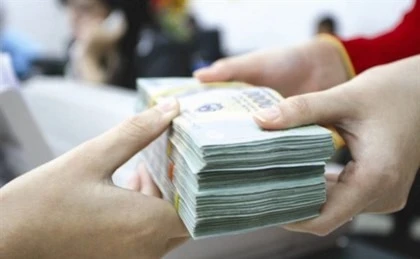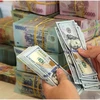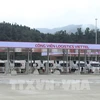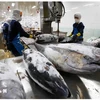Hanoi (VNS/VNA) - Researchers at the Vietnam National University (VNU) – Hanoi have presented results of a consumer lending survey showing that the majority of Vietnamese people have never used a consumer loan.
Consumers’ relative lack of loan access represents both a challenge and an opportunity, as previous studies around the world have shown that consumer lending is an important instrument to boost consumption and contribute to macro economic development, said Hoang Van Hai, Dean of the School of Business Administration under the University of Economics and Business, VNU-Hanoi. With more than 90 million people, Vietnam is considered one of the countries with great potential for consumer finance. The question now is how to tap this potential.
The VNU surveyed more than 2,000 consumers in 12 provinces to show that although the majority of people are hesitant to contact financial companies for consumer financial services, a growing number of young consumers are in dire need of it.
Up to 29.8 percent of survey participants expressed a high level of willingness to borrow from credit institutions for consumption should the need arise. However, 62.4 percent of people who responded to the survey have never used consumer loans, due to lack of need and concerns over loan conditions. The rest of respondents said they were disinterested in consumption loans unless they faced dire need.
According to Hai, Vietnam’s consumer lending market in recent years has begun to grow gradually and surely, with more participation from service providers and demand for consumer loans has also increased significantly.
However, the market for consumer loans in Vietnam is smaller than it could be. The limited number of credit and consumer lending organizations account for only 5 to 10 percent of total national credit balance, compared to 40 to 50 percent in developed countries.
Nearly 100 percent of participants in the survey are aware of commercial banks, and 65.55 percent are ready to borrow from them, while the same numbers for credit institutions are 92.93 percent and 30.53 percent, respectively.
At the moment, white collar and blue collar workers are more likely to borrow from credit institutions than from commercial banks, while farmers are least likely to do the same.
The VNU found that despite supposed service quality issues at consumer finance companies, customers who have taken out loans from financial companies are relatively satisfied with their financial products, as well as with the borrowing procedures. Consumers’ satisfaction with the cost of borrowing is relatively lower than their satisfaction with other factors, such as service quality.
Meanwhile, underground credit markets still exist and attract a large number of people to participate.
Based on customer assessments and in conjunction with the criteria for assessing credit institutions’ service capabilities, several names shone as highly rated credit institutions, including HomeCredit, FE Credit and HD Saison.
The research was presented at a seminar discussing the country’s current consumption levels and recommendations for consumers, held by the VNU in Hanoi.
The VNU’s research also emphasizes the need to raise awareness among Vietnamese consumers about the use of consumer lending services and to give recommendations to credit institutions and their stakeholders.
The seminar attracted the participation of delegates from commercial banks, finance companies, university lecturers, researchers and a number of individuals interested in the research topic.-VNA
Consumers’ relative lack of loan access represents both a challenge and an opportunity, as previous studies around the world have shown that consumer lending is an important instrument to boost consumption and contribute to macro economic development, said Hoang Van Hai, Dean of the School of Business Administration under the University of Economics and Business, VNU-Hanoi. With more than 90 million people, Vietnam is considered one of the countries with great potential for consumer finance. The question now is how to tap this potential.
The VNU surveyed more than 2,000 consumers in 12 provinces to show that although the majority of people are hesitant to contact financial companies for consumer financial services, a growing number of young consumers are in dire need of it.
Up to 29.8 percent of survey participants expressed a high level of willingness to borrow from credit institutions for consumption should the need arise. However, 62.4 percent of people who responded to the survey have never used consumer loans, due to lack of need and concerns over loan conditions. The rest of respondents said they were disinterested in consumption loans unless they faced dire need.
According to Hai, Vietnam’s consumer lending market in recent years has begun to grow gradually and surely, with more participation from service providers and demand for consumer loans has also increased significantly.
However, the market for consumer loans in Vietnam is smaller than it could be. The limited number of credit and consumer lending organizations account for only 5 to 10 percent of total national credit balance, compared to 40 to 50 percent in developed countries.
Nearly 100 percent of participants in the survey are aware of commercial banks, and 65.55 percent are ready to borrow from them, while the same numbers for credit institutions are 92.93 percent and 30.53 percent, respectively.
At the moment, white collar and blue collar workers are more likely to borrow from credit institutions than from commercial banks, while farmers are least likely to do the same.
The VNU found that despite supposed service quality issues at consumer finance companies, customers who have taken out loans from financial companies are relatively satisfied with their financial products, as well as with the borrowing procedures. Consumers’ satisfaction with the cost of borrowing is relatively lower than their satisfaction with other factors, such as service quality.
Meanwhile, underground credit markets still exist and attract a large number of people to participate.
Based on customer assessments and in conjunction with the criteria for assessing credit institutions’ service capabilities, several names shone as highly rated credit institutions, including HomeCredit, FE Credit and HD Saison.
The research was presented at a seminar discussing the country’s current consumption levels and recommendations for consumers, held by the VNU in Hanoi.
The VNU’s research also emphasizes the need to raise awareness among Vietnamese consumers about the use of consumer lending services and to give recommendations to credit institutions and their stakeholders.
The seminar attracted the participation of delegates from commercial banks, finance companies, university lecturers, researchers and a number of individuals interested in the research topic.-VNA
VNA

